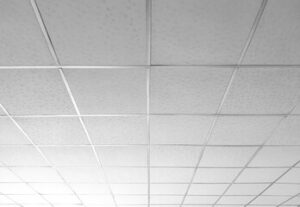Ceilings Perth provide various functions, including aesthetics, acoustic control, and concealing infrastructure like pipes and wiring. They can also reduce a room’s scale and hide certain structural elements, such as unevenness or installations.

Rose Uniacke likes to restore the plaster ceiling mouldings in old houses to add visual interest. Several different ceiling textures are available, suited to both traditional and contemporary homes.
Wood ceilings are a classic building material that has been used in construction for countless years. Their natural beauty adds a sense of warmth and tranquility to any room, while providing practical benefits like soundproofing and improved acoustics. The right wood type, cut and finish can deliver an array of visual and functional benefits.
For example, hardwoods like ipe, teak and cumaru are aesthetically appealing due to their unique grain patterns that deliver visual interest to any space. These characteristics also make them durable enough for ceilings, as they are resistant to stains and scratches. Another great benefit of wood ceilings is that they are a natural insulator, which can help regulate indoor temperatures and save energy costs.
The acoustic properties of wood make it ideal for reducing noise levels in residential spaces, such as home offices or living areas. The porous nature of wood helps absorb sound waves and dampen echoes, allowing people to concentrate more easily. Moreover, wood ceilings can enhance lighting design by reflecting and dispersing light throughout a space.
As a result, a wooden ceiling can provide an ideal backdrop for a variety of decorative styles and colors. For instance, a soffit or coffered wood ceiling can be used to highlight a feature wall or create a focal point in a room. This type of ceiling also works well in spaces with high ceilings, such as auditoriums or churches.
Moreover, flat panel wood ceilings offer a contemporary style that is suitable for commercial spaces and offices alike. They can be used to promote focus and reduce noise in workplaces, or in educational facilities to support learning and creativity. They can even be used in retail and hospitality spaces to create a more inviting atmosphere for customers.
Wooden ceilings should be inspected regularly for damage or signs of wear and tear. If any issues are found, they should be repaired immediately to avoid further damage or potential structural failure. When installed properly, wood ceilings can last for decades and enhance the longevity of any space.
As a sustainable and renewable resource, wood is an eco-friendly choice for ceilings that can be sourced from responsible forest management. In addition to boosting the visual appeal of a space, flat panel wood ceilings support biophilic and neuroaesthetic design principles by promoting well-being and a connection with nature.
Beamed Ceilings
A beamed ceiling is a creative way to add rustic character and dimension to any space. Originally used in older homes, the exposed beam ceiling has become a popular way to add a timeless, natural aesthetic to modern design. “Beam ceilings work well in nearly every traditional and contemporary design style,” explains Steven Ginn, principal architect at Steven Ginn Architects in Omaha, Nebraska. “They can be an anchor to a rustic or farmhouse-style interior, and also add structure to a more formal space. They can even make a smaller room feel bigger and more spacious.”
There are many options for creating a beamed ceiling, including the number of beams and their layout. The most common is a parallel beam layout that stretches across the ceiling, often spanning the width of the space or the length. This design is ideal for creating a sense of warmth and coziness, especially when paired with a wood paneled or plaster ceiling.
Another option is a coffered or grid ceiling, which features beams arranged in square or rectangular sections on the ceiling. This design works particularly well in formal spaces, such as libraries or living rooms, as it lends a classic feel that is especially appealing to those who enjoy the elegance of traditional and Colonial-style homes.
Cathedral ceilings are also a great option for those who want to add a dramatic look to their home. These ceilings feature equal-sloping sides that meet at an apex to create a stunning ceiling that is sure to impress any guests. They are a popular choice for dining rooms and other large rooms where people will be looking up, and they often allow homeowners to build second floors above them without risking structural integrity.
For a more cost-effective way to get the look of exposed beams, some homeowners choose to use faux beams instead of real wood. Made of high-density polyurethane, these faux beams are lightweight and can be installed without damaging the existing ceiling. They can also be painted to match the color of the existing ceiling, and they are a great alternative for those who do not wish to commit to the maintenance and upkeep that a real wood ceiling requires.
Suspended Ceilings
Suspended ceilings have long been an attractive and practical option for commercial spaces. They offer a variety of benefits, including providing a blank canvas for creative designers and concealing piping, cabling and ductwork. The installation process is quick and straightforward for professionals, which makes this type of ceiling ideal for renovations and new construction projects.
The basic structure of a suspended ceiling involves a metal grid that is suspended from the existing roof. This complex framework consists of main runners and cross tees that interconnect to form a measured grid pattern. These are often used to support light fixtures and duct vents, but they can also be designed for specific acoustic properties like sound absorption or impact resistance.
Many suspended ceiling systems are designed to allow easy access for maintenance and repairs, enhancing the overall safety of a space. Some also offer fire resistance, which can be important in areas that are required to evacuate during a fire, such as corridors and exitways.
In addition to being able to conceal utilities and wiring, a suspended ceiling can add a layer of insulation that helps maintain an appropriate indoor temperature while lowering energy costs. They can even help with air circulation, allowing you to increase ventilation in areas that may require it.
Suspended ceilings are available in a wide range of materials, colors and textures to suit the specific needs of each space. For instance, some tiles are designed to be mold and mildew resistant, which can be particularly useful in hospitals or clean room environments. Others have a high light reflectance, which can reduce eye strain and enhance a room’s aesthetics.
Another feature to consider is whether you want a suspended ceiling that provides acoustic properties. Many manufacturers offer acoustic ceiling tiles that can transform noisy areas into quieter surroundings. One example is Arktura’s sustainable Soft Sound material, which is made from recycled milk cartons and can absorb up to 10 decibels of noise. This helps improve comfort and focus in busy commercial environments, while reducing noise pollution. This type of ceiling can be particularly useful in acoustic-critical spaces like restaurants, offices and schools.
Conventional Ceilings
Conventional ceilings provide a clean, unobtrusive backdrop that complements other design elements in a room. These ceilings are a cost-effective option for homeowners and building owners. Conventional ceilings can also be enhanced in a variety of ways. Adding textures can make ceilings feel cozy and inviting. The simplest way to add texture to a conventional ceiling is by painting. This is a quick and easy DIY project that can add tremendous character to a room.
Another great way to enhance a conventional ceiling is by installing moldings or wallpaper. These types of ceiling enhancements are more difficult to accomplish and require some expertise, but the results can be breathtaking. Decorative ceilings can also provide acoustic benefits. Rooms with high ceilings are prone to echo and reverberation. Using conventional ceilings that are a bit lower can help alleviate these problems.
Vault and tray ceilings are conventional ceiling designs that can be enhanced in a number of different ways. Often, the original conventional ceiling is left intact and a recessed area is added below it. This is a more complicated construction than a simple drop ceiling because the framing must be raised to accommodate the new recessed space. This type of ceiling can be used to highlight a piece of art, a beautiful light fixture or a stairwell.
Beam ceilings are constructed with wood beams or panels that create a unique look in a room. This type of ceiling is perfect for creating a rustic or elegant look and can be used to hide ductwork and wiring. Having an exposed wood ceiling can also offer a natural and earthy look to a home or building, which is a great way to connect with nature.
A vaulted ceiling is a ceiling that has a sloping surface. These ceilings can be designed to be either sloped or flat, and they can include a variety of materials. Vaulted ceilings can be a great way to add a sense of height and drama to a room, but they are not as good at hiding ductwork or wiring. They can also be a challenge to work on because they are so steep and angled.



